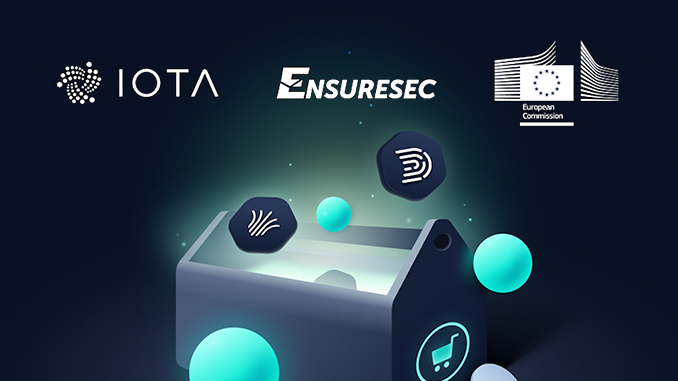
IOTA has participated in the EU project ENSURESEC for more than two years. At the end it is stated that the goal of making e-commerce more secure in the future with the help of various IT tools has been achieved.
The IOTA Foundation has joined EU initiatives several times in recent years, developing public and commercial IT solutions for use in sectors ranging from health to the environment to logistics. One of them is called ENSURESEC, which revolves around e-commerce and aims to give companies tools to improve online security. In November 2020, IOTA published an outlook on what is expected from ENSURESEC and now draws the conclusion in a blog post after a good two years of project work. The IOTA Foundation proudly refers to the evaluation of the EU Commission, which certifies ENSURESEC’s success.
Specifically, one focus for IOTA was to create an easy-to-use database where information on possible identity theft and suspicious payment transactions could converge. The challenge: Network participants are willing to feed their information there, but at the same time don’t want to reveal trade secrets. IOTA drew on its modules for distributed ledger technology (DLT) and, together with project partners for ENSURESEC, created the point at which the collected information can be automatically analyzed. In the future, small and medium-sized enterprises, for example, will be warned when concluding transactions if inconsistencies are already known on the customer side.
The IOTA Foundation writes that it has learned a lot during the ENSURESEC project. For example, the bridge that uses digital identities has been upgraded and can now handle not only IOTA Identity but also third-party formats. This results in use cases for e-commerce, for example, where an age query is to be reliably confirmed. Banks have often already checked such information and can now give the “green light” or issue a warning if identity theft is suspected.
Further, the IOTA Foundation emphasizes that in use cases such as ENSURESEC, it is preferred to organize a central point of contact even for a decentralized network. It plans to take this into greater consideration in the future. IOTA also notes that the experience at ENSURESEC has encouraged internal development work at the foundation to focus more on modules than projects. This move played a major role in IOTA’s March 2022 progress report.
Conclusion: IOTA and EU projects – where do we go from here?
The results of ENSURESEC are now to prove themselves on the open market; for other prestigious EU projects such as EBSI, IOTA and cooperation partners are still in development work. However, the IOTA Foundation has recently been forced to cut costs and may therefore be stretched to its limits when it comes to allocating manpower. Investors will continue to look at where IOTA can move beyond pilot projects and actually market application-ready solutions.

Leave a Reply